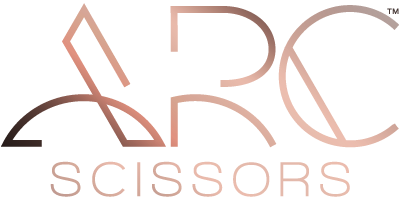How to Avoid a Bulky Bob: 4 Techniques To Try

4 Pro Tips for Cutting Thick-Hair Bobs
Featuring ARC™ Scissors artists Summer Evans (@summerevansstudio) and Chris Jones (@chrisjones_hair)
Cutting a bob on thick hair can test even the calmest stylist’s patience. Between managing bulk, maintaining shape, and avoiding that dreaded “bell” silhouette, it’s easy to spiral. But thick hair doesn’t have to be stressful—it just requires a strategy.
Here’s how to control density, refine movement, and keep your cool behind the chair.
Tip #1: Work Dry First to See Where the Weight Lives
Before you pick up a comb, see the density you’re dealing with. Cutting dry allows you to visually map out where the hair is heaviest and where it naturally falls.
-
Center back: This is usually where bulk hides. Use a controlled, gliding motion with your scissors to remove internal weight gradually while keeping the shape balanced.
-
Hairline: Typically the lightest area—avoid thinning or debulking here. Focus instead on blending to maintain structure.
-
Perimeter: If ends are fragile or frayed, skip aggressive texturizing and focus on a strong, clean line that encourages healthy grow-out.
Pro Tip: On wavy or curly textures, only debulk the heaviest curls. Removing too much weight collapses the pattern and steals natural bounce.

Instagram via @summerevansstudio
Tip #2: Understand Texturizing vs. Thinning
“Thinning removes bulk. Texturizing creates movement,” explains Summer Evans, Connecticut-based stylist and ARC™ Scissors Team Member. “When done with intention, texturizing can work on almost any hair type—even finer textures.”
Summer’s go-to for thick-hair bobs? The ARC™ Symmetry 30/2 Reversible Blender.
“It only removes about 15–20 percent of the hair,” she says. “That gives me control—I can lighten the shape without over-thinning. Every pass takes out exactly the right amount.”
Why It Works:
-
The 30/2’s fine teeth and two-step groove pattern deliver an ultra-smooth blend.
-
Ideal for dry cutting midshaft to ends to release density without visible holes.
-
The reversible handle lets you switch hands and angles comfortably for even results.
Pro Tip: Always texturize into the shape, not across it. Follow the natural fall of the cut to maintain structure and movement.
Tip #3: Use Vertical Graduation for Slimming and Balance
To refine fullness and enhance face shape, 2021 #ONESHOT Bob/Lob Winner Chris Jones uses vertical graduation to carve flattering, balanced lines.
Here’s his go-to technique:
-
Create a horizontal parting at the hairline and work about an inch above the ear.
-
Overdirect the section out and slightly downward.
-
With the ARC™ Symmetry 30/2 Blender, keep the straight blade on the bottom and close as you exit to slide-cut a soft graduation.
“This leans out the sides and frames the jaw beautifully,” Chris says. “Because a heavier section falls over the graduation, the perimeter stays full but the internal weight disappears.”
Face Shape Tip: For round faces, leave 2–3 inches below the chin to elongate and create an oval illusion.
Tip #4: Refine Bulk Without Creating Holes
Over-thinning thick hair can create holes and frayed ends—so work smarter, not harder.
Try a slice-and-weave technique:
-
Take a vertical slice on dry hair.
-
Weave your thumb blade through the section like you’re highlighting.
-
Without fully closing the blades, softly back-cut the weave using a sliding motion.
This diffuses weight evenly throughout the interior instead of removing bulk in chunks, keeping your shape cohesive and controlled.
Pro Tip: Use sharp, convex-edged shears like the ARC™ Harmony II to ensure smooth back-cutting without snagging or pulling.
Final Takeaway: Control Creates Confidence
The secret to cutting thick-hair bobs isn’t speed—it’s strategy.
Start dry to read density. Texturize intentionally to build movement. Use graduation to lean out the shape. And work with tools that let you cut confidently and precisely.
The ARC™ Difference: Precision That Performs
ARC™ Scissors are handcrafted in Seki City, Japan, the home of samurai steel, and engineered for modern cutting techniques that demand both power and delicacy.
Here’s why pros like Summer Evans and Chris Jones trust ARC™:
-
True Convex Edge Precision – Clean, gliding cuts for slice, slide, and dry cutting.
-
Perfect Balance & Ergonomics – Comfort that keeps your hands steady and your body aligned.
-
Japanese Steel Strength – Effortlessly cuts dense hair without pushing or fraying.
-
Versatility for Every Shape – From Paragon II for perimeters to Symmetry 30/2 for invisible blends.
-
Education Included – Every purchase unlocks 20 free BTC University classes, including Chris Jones’ and Ben Brown’s foundational bob courses.
“Thick hair isn’t the enemy—it’s potential waiting to be shaped.”
Discover the ARC™ difference and master bobs that move with precision, balance, and confidence.
Shop ARC™ Scissors and unlock your 20 free BTC University classes today.
Ready to remove some weight? Click here to get your pair of 30/2 Texturizer from ARC™ Scissors!





Comments on this post (0)